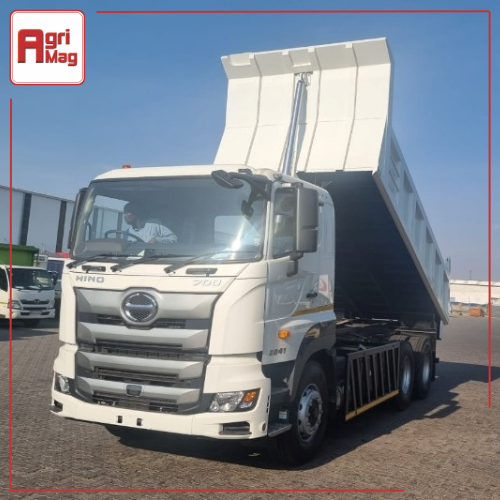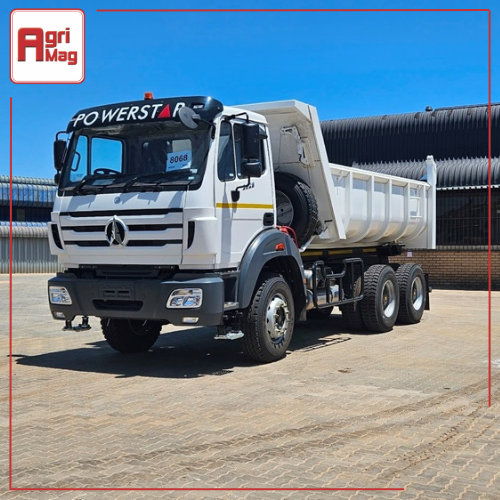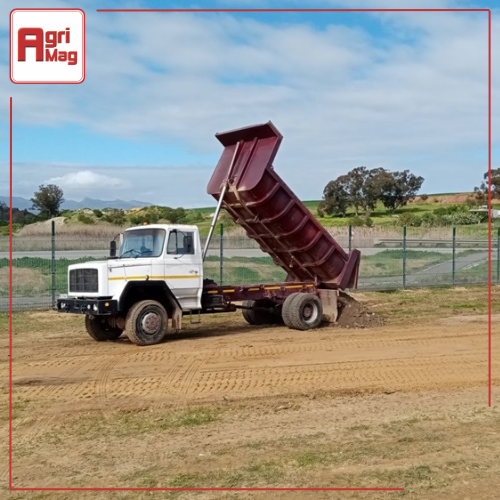
Key Components of Tipper Trucks: Essential Insights for the Market
Date: 30/10/2023
What makes a tipper truck so efficient at transporting and unloading heavy materials? Tipper trucks, also known as dump trucks, play a crucial role in the construction, mining, and agricultural sectors. Understanding the key components of tipper trucks can help you appreciate their functionality and importance in these industries. In this article, we will delve into the main components of these trucks, including the chassis and frame, tipping mechanism, hydraulic systems, and cargo bodies. Request a dealer account on AgriMag.

1. Chassis and Frame
The chassis and frame form the backbone of any tipper truck. These components provide the structural integrity needed to support heavy loads and endure rough terrains. The chassis is essentially the truck's base structure to which all other components are attached.
Material and Design: Typically made from high-strength steel, the chassis and frame are designed to withstand significant stress and strain. In South Africa, where diverse terrains range from smooth urban roads to rugged rural paths, the durability of the chassis is particularly crucial. Functionality: The frame not only supports the weight of the cargo but also houses the engine, transmission, and other essential systems. A robust chassis ensures the truck can handle heavy loads without compromising safety or performance.
2. Tipping Mechanism
The tipping mechanism is what differentiates tipper trucks from other types of heavy vehicles. This system allows the truck bed to be lifted and tilted to unload materials.
Types of Tipping Mechanisms: There are primarily three types of tipping mechanisms – rear, side, and three-way tipping.
- Rear Tipping: This is the most common type, where the truck bed tilts backward to dump the load.
- Side Tipping: Ideal for areas with limited space, the truck bed tilts to either side.
- Three-Way Tipping: Offers maximum flexibility as the truck bed can tilt in all three directions: back, left, and right.
- Operation: The tipping mechanism is powered by hydraulic systems that lift the bed, ensuring smooth and controlled unloading. This mechanism is essential for efficiency in loading and unloading operations, reducing manual labor and time.

3. Hydraulic Systems
Hydraulic systems are the lifeblood of tipper trucks, enabling the tipping mechanism and other functionalities.
- Components of Hydraulic Systems: Key elements include hydraulic pumps, cylinders, and fluid reservoirs.
Hydraulic Pumps: These generate the necessary pressure to lift the truck bed.
Hydraulic Cylinders: Convert hydraulic pressure into mechanical force to elevate the bed.
Fluid Reservoirs: Store the hydraulic fluid that powers the system.
- Importance in Tipper Trucks: In our country, where tipper trucks are often used in challenging environments, reliable hydraulic systems are crucial. They ensure that the tipping mechanism operates smoothly, even under heavy loads and adverse conditions.
4. Cargo Bodies
The cargo body is the container mounted on the chassis where materials are loaded. The design and build of the cargo body are vital for the truck’s efficiency and versatility.
- Materials: Cargo bodies are typically made from high-strength steel or aluminum. Steel is preferred for its durability and ability to withstand harsh conditions, while aluminum is chosen for its lighter weight and resistance to corrosion.
- Design: The design of the cargo body varies depending on the intended use. For instance, a rock body is designed for carrying heavy and abrasive materials like stones and gravel, while a lighter design might be used for transporting sand or agricultural products.
- Capacity and Shape: The capacity of the cargo body is crucial for determining how much material can be transported in a single trip. Additionally, the shape of the cargo body is designed to facilitate easy loading and unloading, ensuring that materials do not get stuck or cause damage during transport.
Understanding the components of tipper trucks is essential for anyone involved in industries that rely on these powerful machines. The chassis and frame provide the necessary strength and support, while the tipping mechanism and hydraulic systems ensure efficient and controlled unloading. The cargo body, designed to suit various materials and loads, completes the truck’s functionality. In South Africa, where these trucks are indispensable in sectors like construction, mining, and agriculture, knowing the key components can help in selecting the right tipper truck for your needs and maintaining it effectively for long-term use. Become a dealer on AgriMag by requesting the account here.
Categories:
Common category
Category Search:
Latest articles:

Why Planning Early for the Planting Season Pays Off

Why Winter Feed Management is Crucial for Livestock Health

How Smart Farming Technology is Revolutionising Agriculture


